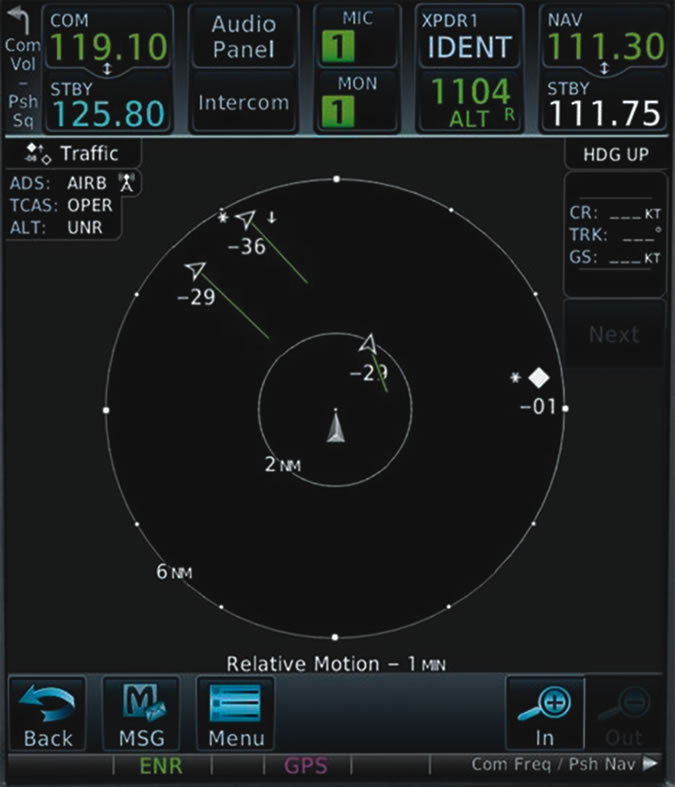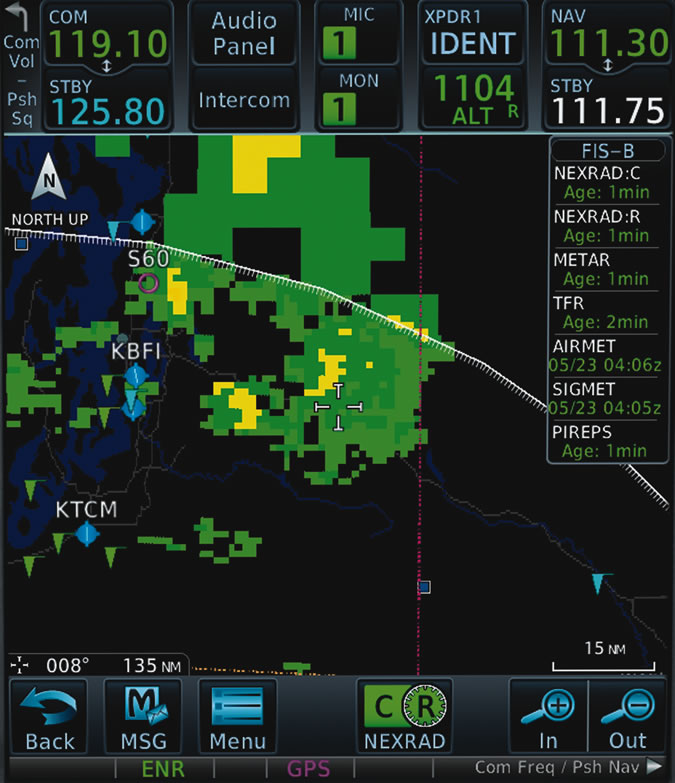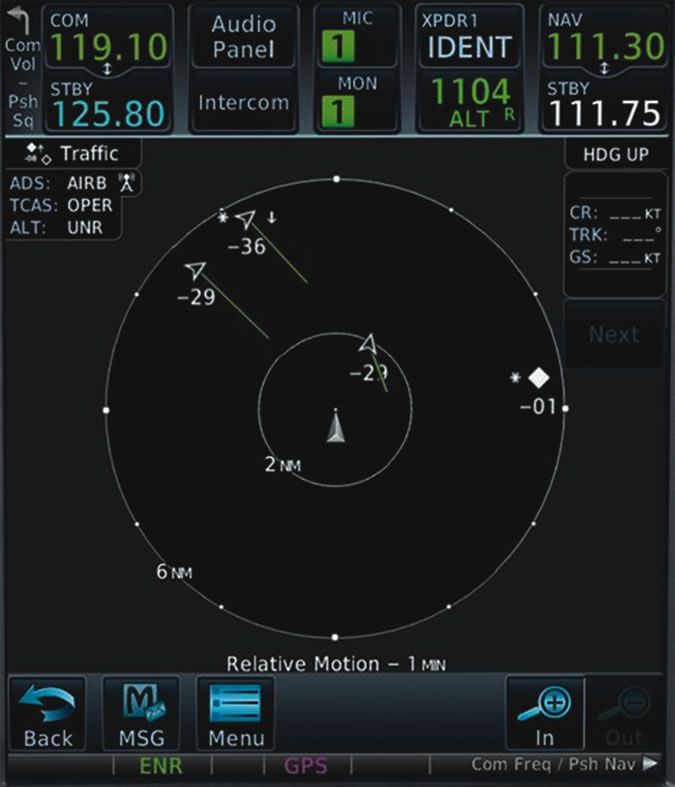About the time this issue of the magazine hits your mailbox, the FAA will hold what its labeled a Call to Action summit designed to engage the aviation industry in meeting the January 1, 2020, deadline to equip aircraft with new avionics technology. The invitation- and industry-only event is set for October 28 and is the agencys latest high-visibility attempt to encourage users of all affected aircraft and airspace to equip with technology complying with the FAAs NextGen standard, namely, ADS-B OUT. The table on page 15 details where itll be required. About a week after the agency announced its summit, the Inspector General for the FAAs parent Department of Transportation issued a report critical of its progress on NextGen and ADS-B.
Meanwhile, industry observers point out two truisms: First, its not likely the FAA will extend the January 1, 2020, deadline for carrying ADS-B OUT in certain airspace. Second, if every operator of an aircraft presently lacking ADS-B were to decide, now, to commission installation of the necessary equipment, available avionics shop capacity and turnaround times mean not everyone can be accommodated and equipped in time to meet the deadline. The implication is if you dont have ADS-B installed already, you may have problems getting the work performed in time to meet the deadline, and certainly wont be able to use certain airspace after that day.

The good news is not everyone is going to want or need to install ADS-B by the deadline. The better news is ADS-B installations aboard in-service aircraft will continue beyond the deadline.The great news is there are some interesting products hitting the market-with more to come-which may make the decision to upgrade a lot easier. Whether you should upgrade now, wait a couple of years, or wait until the deadline comes and goes depends on a variety of factors, not least of which is whats already in your panel and what capability-beyond meeting the basic ADS-B OUT requirements-you want or need.

Out And In
Automatic dependent surveillance -broadcast (ADS-B) comes in two basic flavors: Out and In. The ADS-B OUT standard approved by the FAA in 2010 specifies the data and manner in which approved installations must work, but theres little standardization on the IN side: The 2020 deadline references ADS-B OUT capability only. In other words, whether and how an operator chooses to obtain and use ADS-B IN data is outside the scope of the rules mandating the 2020 deadline.
Ironically, its ADS-B IN that has garnered most of the attention among general aviation users so far. Low-cost (for GA), portable (i.e., non-certified) ADS-B IN receivers coupled with a tablet or smartphone and compatible software are one of the industrys recent success stories; users are snapping up related products to display weather and traffic and abandoning pay-to-play satellite-based subscription services. The math is a no-brainer to many: They already have the hardware in the form of a tablet computer running electronic flight bag software. For around another $800, operators can buy a portable ADS-B IN receiver and use it to display most of the weather services they enjoyed and paid $100 or so a month to use. In eight months, the ADS-B IN receiver has paid for itself and usage after that point is free.
The ADS-B IN market that has sprung up tells us a couple of things. One, GA consumers are quite healthily interested in new technologies and capabilities, especially if they involve networking. Two, the industry doesnt seem to perceive enough return on its investment to install ADS-B OUT aboard in-service aircraft. And its the ADS-B OUT requirement-the one with which operators must comply by 2020-thats generating the most confusion.
Under 18
Part of the confusion hinges on there being two different and basic options for equipping with ADS-B OUT, depending on the cruising altitudes the aircraft will use. The FAA established two technical standards-978 UAT and 1090ES-for complying ADS-B OUT equipment. The technical difference between them is that 978 UAT (universal access transceiver) operates at 978 MHz while the 1090ES standard uses a basic Mode S transponder at 1090 MHz capable of extended squitter operation (which where the ES comes from).
The 1090ES standard works at all altitudes but is required at or above FL180. Meanwhile, 978 UAT is allowed when operating below FL180/18,000 feet. Additionally, 1090ES is the ADS-B standard many jurisdictions other than the FAA have settled on at all altitudes within their airspace. In other words, if you plan to fly your flivver internationally, you need 1090ES. If you plan to fly in U.S. airspace only and below FL180, you can get by with 978 UAT-based technology. Nothing except your budget and common sense prevents you from installing and using both.
An important caveat: If you want the full benefits of ADS-B IN-FIS-B and TIS-B-theyre only available with a 978 UAT receiver. The presumption is aircraft cruising at or above FL180 already are equipped with a weather data link and/or on-board radar, and carry approved collision avoidance. So, a King Air driver who routinely operates in the flight levels but also wants the weather information available from FIS-B, will need to install 1090ES equipment to comply with the 2020 deadline and figure out a 978 UAT solution, which easily can include portable, non-certified (i.e., relatively inexpensive) equipment.
Another caveat, mentioned in the sidebar on page 13: According to the FAA, The TIS-B signal is an advisory service that is not designed for aircraft surveillance or separation, and cannot be used for either purpose. Additionally, the FAAs original proposed rule noted…the FAA will decommission TIS-B once ADS-B OUT is fully implemented. The agency changed its mind by the time the final rule was published, but noted it will evaluate the benefits of continuing TIS-B past the 2020 rule compliance date. So, between the DOT Inspector General and many others in the industry wondering where their ADS-B benefits are, it shouldnt be a huge surprise that theres no stampede to avionics shops for ADS-B installations. All that having been said, the easiest and cheapest way to fly a ADS-B compliant aircraft may be to buy one with the equipment already installed.
Decisions, Decisions
Once an operator decides to embrace ADS-B and equip an aircraft to meet the OUT requirement mandated in 2020, some decisions will be driven by whats already in its panel. One of the decision points can hinge on whether theres already a certified WAAS GPS installed. Its popular, well-understood and relatively inexpensive, and its the ADS-B OUT-compatible navigation signal used by most avionics manufacturers marketing to GA customers in the U.S.
If you already have a WAAS- compatible GPS navigator installed, its data output likely can be used to meet the ADS-B OUT requirements. Some additional wiring, perhaps an antenna and/or a software upgrade may be necessary. If theres no GPS in the panel, or its not WAAS-enabled, some kind of compatible receiver will need to be installed. Avionics manufacturers have developed products to meet this need and incorporate all the magic necessary to meet the ADS-B OUT requirement in 2020. (See the sidebar for some details.) Additional products from the usual suspects-and perhaps a few companies not yet well-known among U.S.-based GA operators-may hit the market as soon as next month.
One option when theres an approved WAAS GPS already in the panel is to install another one for ADS-B only. Why have one WAAS GPS system aboard when you can have two? In other words, even if your existing panel will support ADS-B OUT data requirements, it might not be bad idea to install a separate system to handle them. Redundancy, and all that.
Whither ADS-B IN?
The final consideration is whether you want to install approved ADS-B IN hardware and software, and on what displays. There are good arguments both ways. The decision of which displays to use in displaying FIS-B and TIS-B-panel-installed and approved or via a portable, unapproved solution-shouldnt have to be an either/or: With a compatible panel-mounted display, you can have both.
The real issue is whether to embrace an approved ADS-B IN installation in the first place. If you go with a portable ADS-B IN receiver like Garmins GDL 39 or Sportys Stratus 2, you can install a compatible 1090ES transponder and an approved nav data source and be ADS-B OUT compliant. One thing is certain: Better display hardware and more-capable software for the cockpit will first appear on portable devices and become ubiquitous before being available for the panel. In fact, the proliferation of tablet computers and appropriate additional hardware/software-based electronic flight bag applications means their relatively inexpensive screens likely will be the preferred displays for ADS-B IN traffic and weather information in the foreseeable future, regardless of whether a compatible display is installed.
Currently, avionics manufacturers are either already marketing or soon will be offering a variety of products providing either a hard-wired, wifi or Bluetooth connection to popular tablet computers. We can expect more new ADS-B IN/OUT products incorporating at least a wireless connection to portable devices, eliminating the need for compatible panel-mounted displays in coming months and years.
Despite occasional bumps in the road, the FAA appears well on its way to making NextGen and ADS-B work. The seeming lack of valuable GA benefits from the technology argues in favor of keeping compliance costs low, and going with portable displays for the time being.




